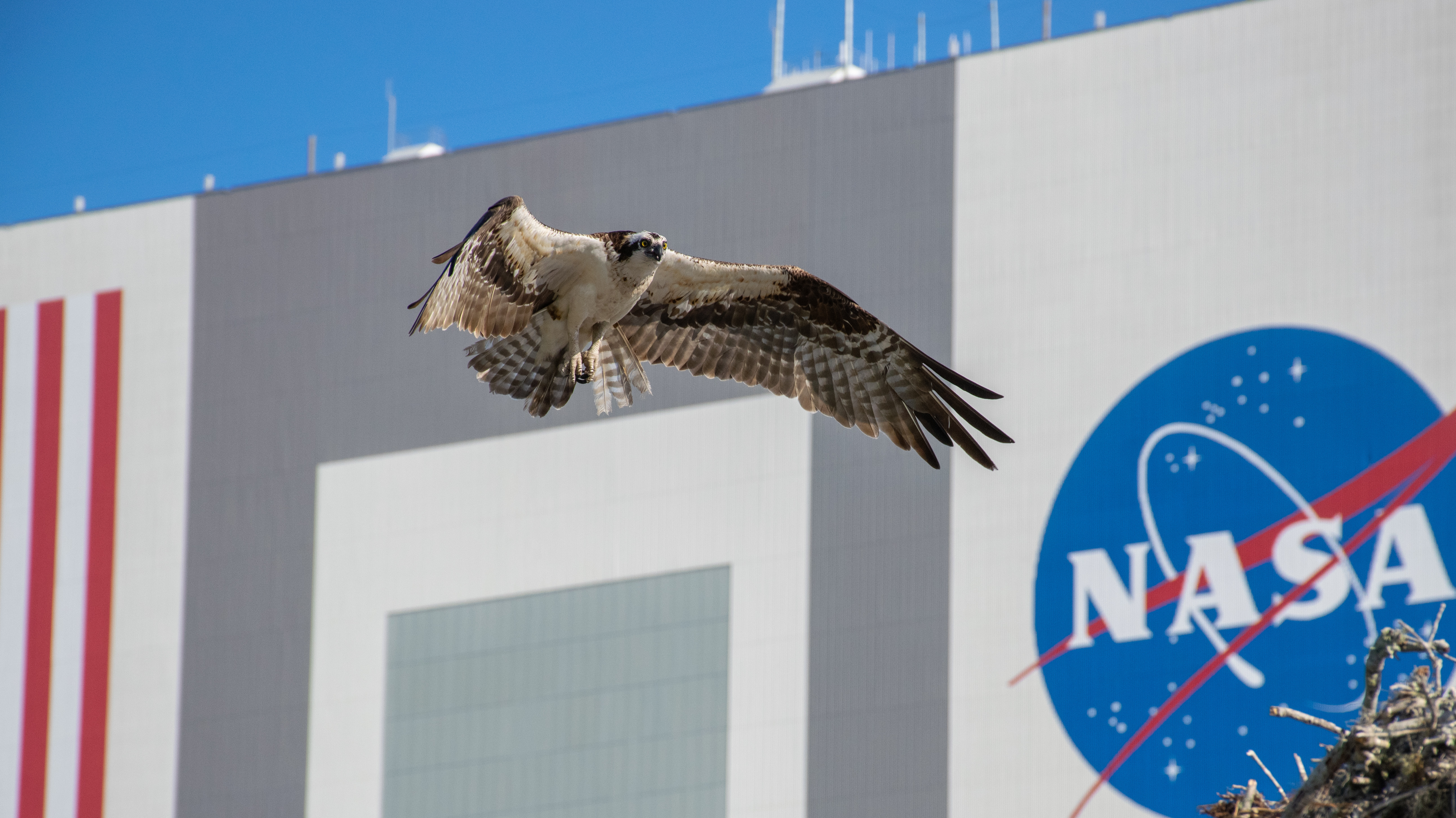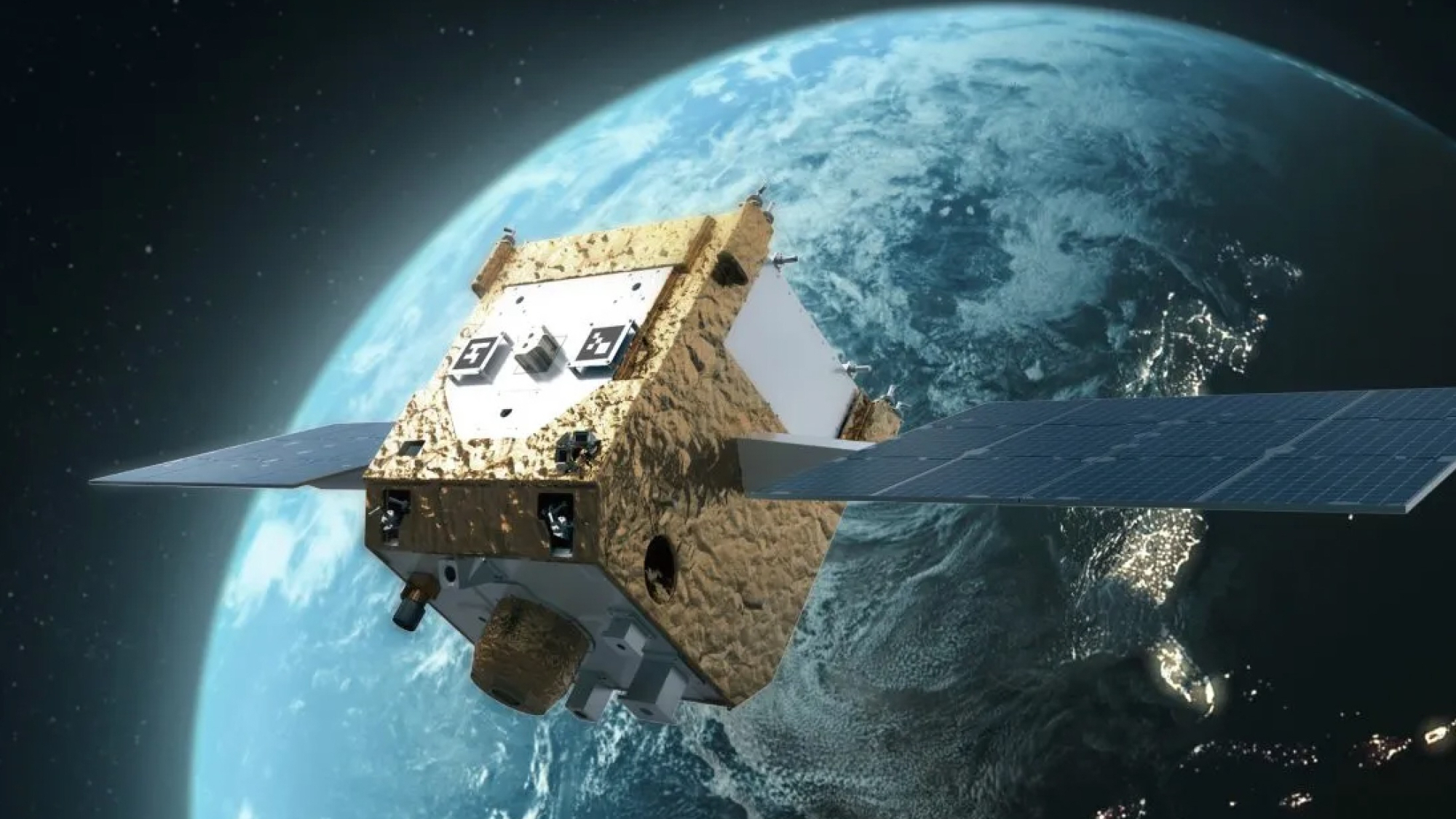India's Chandrayaan-3 lunar lander barely kicked up any moon dust. Here's why that matters
A unique configuration of engines helped India's Chandrayaan-3 lander Vikram ace its historic moon landing.
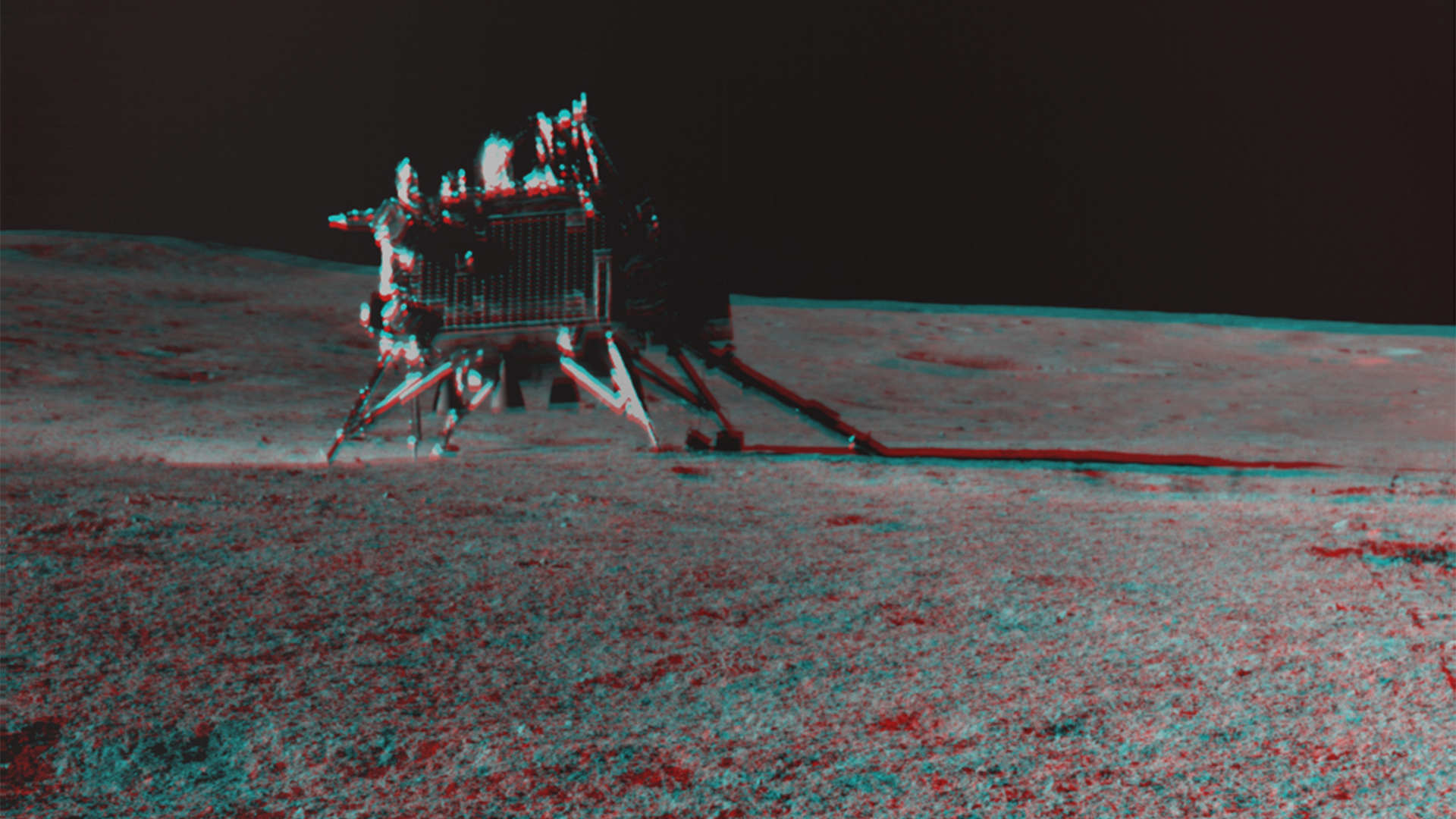
India's Chandrayaan-3 spacecraft, which aced its historic landing near the moon's south pole last August, barely kicked up any moon dust during descent thanks to a unique configuration of engines, a new study reveals. As a result, its cameras got clear views of the landing region during the critical minutes prior to touchdown, therefore capturing images that helped the spacecraft avoid hazardous craters and ultimately land safely.
"When you're heading [to the south pole], the scientifically interesting areas are always the hazardous regions," said Suresh K, a scientist with the Space Applications Centre (SAC), a research institution of the Indian Space Research Organisation (ISRO) in Gujarat, India.
Speaking on Monday (March 11) at the Lunar and Planetary Science Conference (LSPC), which is being held this week in Texas, K shared with scientists pre- and post-landing images from the mission, which operated on the moon for two weeks before succumbing, as expected, to frigid lunar night temperatures.
Related: India's Chandrayaan-3 moon lander kicked up a 'halo' of dust visible from space
During descent, spacecraft fire their engines to reduce their speeds in preparation for a soft landing. The exhaust from these engines then strikes the moon's surface, whose powder-like regolith typically blows into a large plume thanks to the moon's low gravity and lack of atmosphere.
Cameras onboard the Chandrayaan-3 spacecraft, however, detected the resultant dust plume beginning at just 59 feet (18 meters) above the moon's surface. This marks the least amount of moon dust ever kicked up during a moon landing among missions including NASA's Apollo ones and China's Chang'e-3 endeavors, K said.
He and his colleagues analyzed pre- and post-landing images of the touchdown area clicked by the lander named Vikram (Sanskrit for "valor") as well as by a high-resolution camera onboard the Chandrayaan-2 orbiter, which has continued to circle the moon since its lander-rover duo crashed during touchdown in 2019. The sprayed dust stemming from Vikram's touchdown settled down into about 1,561 square feet (145 square meters) around the lander, as confirmed by a camera onboard the rover Pragyan (Sanskrit for "wisdom"). This is higher than previous estimates of 1,167 square feet (108 square meters), meaning the spacecraft would have displaced much more than 4,500 pounds (2 metric tons) of lunar regolith.
Get the Space.com Newsletter
Breaking space news, the latest updates on rocket launches, skywatching events and more!
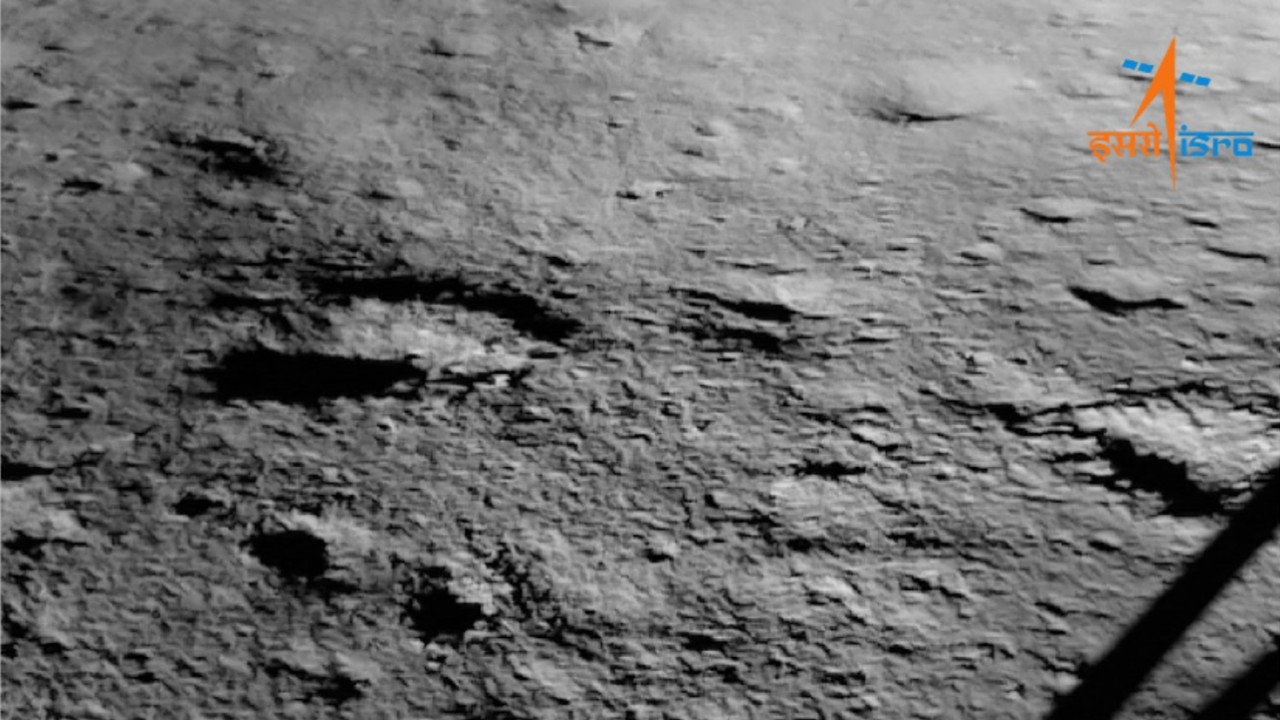
Presenting the new findings at LPSC on Monday, K attributed the intriguingly short dust plume to the lack of a central engine on the spacecraft, which resulted in a lower engine thrust during descent. Starting its “rough braking phase” at an orbit of 18.6 miles (30 kilometers) above the lunar surface, when the spacecraft reached 0.4 miles (0.8 kilometers) above its targeted landing area, it switched off two of its four 800-newton engines such that two diagonal engines remained operational all the way until touchdown. The mission used the "least powerful engine till date," K said. "We've observed very less disturbance on the surface."
In addition to the diagonal positioning of the operating engines, the plume's height was influenced by the spacecraft's mass as well as local properties of the regolith. The Chandrayaan-3 mission team is still analyzing the data on that front and expects to make it public in two months, K told scientists at LPSC on Monday.
Vikram and Pragyan notched several milestones during their two operating weeks at the landing site, which Indian Prime Minister Narendra Modi named the Shiv Shakti Point (Sanskrit for "Shiva" and "power" respectively). The name is yet to be approved by the International Astronomical Union (IAU), the organization responsible for officially naming celestial bodies and their features.
By lunar nightfall, the Pragyan rover had traversed 331 feet (101 meters) on the lunar surface, detected sulfur on the moon, rerouted after coming across a potentially deadly crater and sampled lunar regolith at seven or eight locations, said Pratim Das, the director of the science program office at ISRO in Bengaluru.
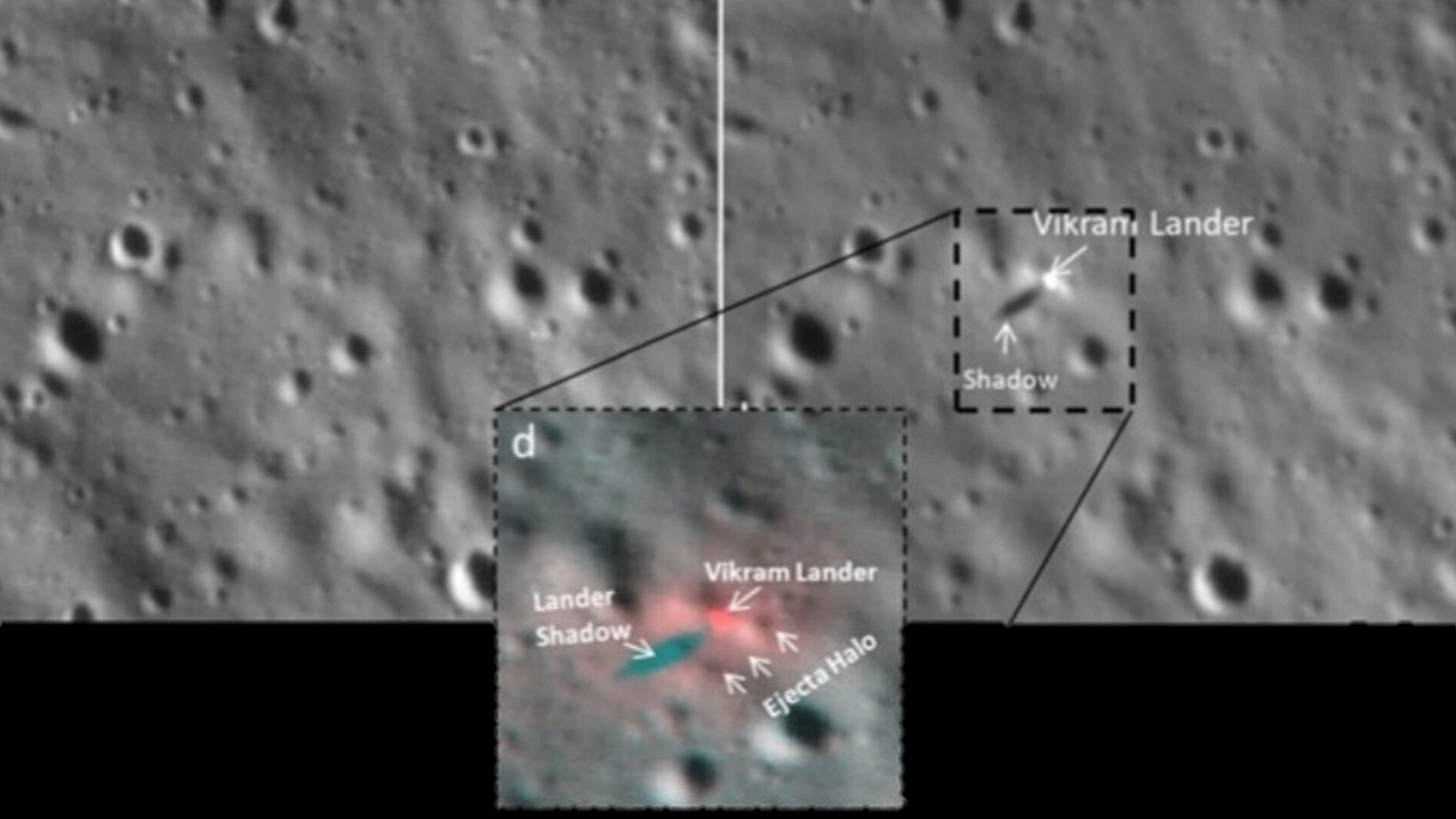
The seismometer onboard Vikram also sensed several "naturally occurring events" on the moon, including moonquakes and micrometeorite impacts, whose analysis is ongoing, he said. An onboard thermal probe for the first time shallowly sank about 4 inches (10 centimeters) into the surface, capturing the temperature of lunar soil at different depths.
With the Chandrayaan-3 mission now in rearview, India is planning its next moon mission, Chandrayaan-4, which is tentatively scheduled to lift off in 2028 and aims to bring moon rocks to Earth. Modi previously said the country should aim to put an astronaut on the moon by 2040, but neither ISRO nor its partner institutions have shared details about how they plan to achieve that vision.
Join our Space Forums to keep talking space on the latest missions, night sky and more! And if you have a news tip, correction or comment, let us know at: community@space.com.

Sharmila Kuthunur is a Seattle-based science journalist focusing on astronomy and space exploration. Her work has also appeared in Scientific American, Astronomy and Live Science, among other publications. She has earned a master's degree in journalism from Northeastern University in Boston. Follow her on BlueSky @skuthunur.bsky.social
-
Unclear Engineer Lunar landers and dust seem to be a significant engineering issue.Reply
The artists' illustrations we see of a SpaceX StarShip sitting end-down on the Moon's surface seem unlikely to be realistic for an actual design - even a first step design. Not only are there a lot of dust issues that design would exacerbate, there is the issue of why haul all that airframe weight back and forth between the lunar surface and lunar orbit when there is no air there?
A lunar orbit-to-surface-and-return shuttle will probably be a specific mission design, rather than a one-design-does-all Star Ship. It would just be a lot more efficient from the standpoint of fuel used and tons delivered to the surface.
And dust is going to be a problem in need of a solution. Rocket exhaust in airless environments does not lose momentum with distance, it just spreads out. So, rocket exhausts pointing downward at an angle are going to hit a wider area, and displace less dust per square foot, but still move a lot of dust. That dust doesn't form clouds suspended in air, because there is no air. So, it mostly acts the same as tiny rocks that get blown in a straight line and promptly land back on the surface and pretty much stay where they land. Unless there is some sort of electrostatic charge on the dust, which could create a layer suspended slightly above the ground.
There does seem to be some electrostatic effect on lunar dust as the day/night "terminator" crosses the surface. So it may also be a consideration for rocket exhaust.
At some point, I expect that prepared landing pads will be constructed at lunar bases to minimize dust issues due to landings and lift-offs, because any dust moved would potentially affect the fixed base elements like solar panels, door gaskets, etc.
But, whatever surface is made for a landing pad also needs to be robust against the effects of the rocket exhausts from the vehicles using it. We can't have it protected by water deluge systems on the Moon. And we aren't going to be using water-based concrete on the Moon, either. Best bet is that we will make fused regolith surfaces using machines with heating elements running on stored solar energy. So, whatever the eventual integrity of such a surface turns out to be, that will probably result in design limits for how much rocket exhaust per square foot can impinge on that surface. And that will probably be a major design parameter for the eventual long-term lunar lander vehicles.




